Matt Wood and David Acord were nominated for an Oscar for the work they did on “Star Wars: The Force Awakens” and they talked to me about it
Neither is any stranger to “Star Wars.” Matthew Wood was the voice of General Grievous and both of them have been working on “Star Wars” projects, for the large and small screen, for more than a decade. But an Academy Award nomination for both is incredibly well-deserved.
They spoke to me about the process of what they do and how things worked and cleared up misconceptions I might have had in the difference between Sound Mixing and Sound Editing.
We began with David Acord, who served as the voice for the “Traitor” trooper, FN-2199.
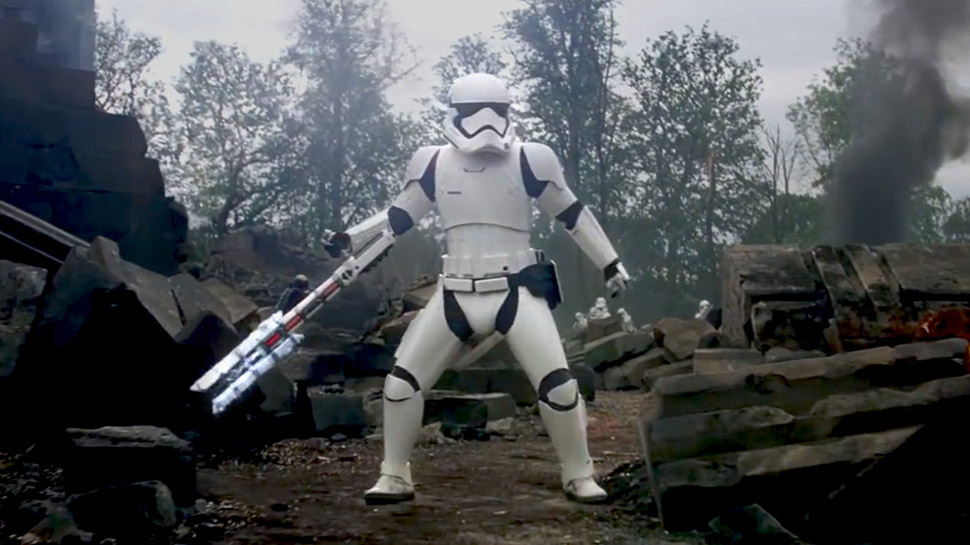
Bryan Young: What’s it like being the voice of the character who turned into the meme of the movie?
David Acord: I’ll tell you, I didn’t even know that that was an online internet thing, the meme thing. I didn’t know that was a thing at all until Pablo Hidalgo emailed me and said, hey, do you mind if I post this thing on Starwars.com and I’ll throw your name out there as the voice of this character. I said, sure. Then I started getting Facebook and email and Twitter things and I started looking around and I was like, oh my god, this is like, this is a whole thing, this whole traitor trooper guy. And then “Star Wars” went and created a whole backstory for him. It was completely unexpected.
BY: I mean, I guess, you’re probably accustomed to things like that happening, occasionally, where you’ll do a little voice for something and it kind of catches on. Because, I mean, you’ve been working for Star Wars a long time, through the prequels and through the Clone Wars, yes?
DA: Right, I did Episodes 2 and 3 with Matthew [Wood.] And then worked on, Matthew and I worked on the DVD restoration for 4, 5 and 6. Then, worked on the whole run of “The Clone Wars” and “Rebels” now. Then, right into “Episode 7.” So, Matt and I have been holding down the “Star Wars” fort, at least in the sound capacity for quite some time. Came in handy on “Episode 7.”
BY: What was the key difference between working on the television series and “The Force Awakens” and how much of a difference was there between working on the prequels and “The Force Awakens?”
Matthew Wood: Well, you know, the prequels and the animated series, “The Clone Wars,” had, obviously, George Lucas was involved in those as the director and as the overall executive producer. And we’ve seen a great transition in our company, if you take Rebels and TFA, just to see how we have Dave Filoni as sort of our through line on both “Clone Wars” and “Rebels.” Which is what kept Acord and I working as well. It’s such a great training ground to come in and we can bring new people into the show on “Rebels” and train them in the ways of “Star Wars” and we all come from Skywalker sound. We have a long legacy with the company to sort of impart that knowledge on younger generations. So, that’s been fun to have Rebels there with us. And to see those stories develop and Filoni taking all these characters into new places and that’s born out of his training with George. And, also to see now with “The Force Awakens,” we have an opportunity to have a new director and tell new stories with these classic characters and for us, for Dave and I, we want to bring in that element that connects the classic films, that classic feeling because sound is basically feeling and emotion, to these new stories, but have people feel like it’s a familiar place. So, it’s like a really, it’s balancing act, to keep people familiar but also bring them to a new place. And to keep the technical part of what we do at a really high level, because you know the fans are putting up anything. They could put up “Clone Wars,” they could put up the Blu-Rays of “Star Wars,” the prequels, “Rebels,” TFA when they all have their Blu-Rays at home or however they’re playing back, and you want to make sure all these things are going to sound like they’re from the same place and they’re all going to have a really high level of technical achievement associated with them. So, it’s that balance of all those things together that kind of connects us all.
BY: A question, as far as connecting the audio to the rest of the saga that’s a perfect segue into my next question, there’s obviously a lot of, it feels like there’s a lot of “Star Wars” nerdery that would have to go on in order to make some of the sound connections. But, even listening to the movie the first time I saw it, it’s like, oh, that’s dialogue straight from “A New Hope,” or things like that. And obviously you two have probably more experience than anyone who probably could have taken that job with all the different aspects of “Star Wars.” Does being a fan enter into or help with the job?
MW: Huge. Huge. Huge part of it. I think. Dave and I, I mean, right off the bat, when I first met Dave, we knew that we were both “Star Wars” fans and that was some of the first projects we did together were “Star Wars,” so having that. It’s connected to our childhood. We’re from the same generation, we both saw “Star Wars” when were probably 5 or 6 years old. It imprints on you. And even going back to something like, when we remastered Episodes 4, 5 and 6 for Blu-Ray and DVD, we had to kind of build the originals films back from scratch and the way the masters were stored, it was just easier for us to go back to the original units that made those movies up. We had to kind of rebuild that movie in fifteen second increments to get it to where it was. We spent like, almost a year on that project and I don’t think there’s any other film in the world that either of us could have done that with because that, the DNA of how those films sound and feel, we’ve seen it so many times, it’s ingrained. You knew if something was right. You could kind of, just, ‘oh that’s not right, I got to fix it.’ And also on TFA, I think it was having us on there was something that JJ liked because we had all that knowledge and we could put in those little pieces of dialogue or pay homage to something in a very subtle or overt way that was going to be connective tissue back to the original stories and movies. And, I think Dave and I, since we enjoyed it, we knew, hopefully, the fans would too.
DA: You mentioned something earlier, to get back to the nerdery word, and how much that helps to have that intimate knowledge and passion for that whole universe. When, if I can tip my hat to Matt for a second, when Matt was casting the loop group for “The Force Awakens,” loop group is basically a group of actors that are hired to voice background characters in the movie that weren’t prominently featured, you want to sort of fill in some of these voices in background, Matt cast all “Star Wars” veterans to be the loop group. By “Star Wars” veterans, I mean people that had done voices in “Clone Wars,” actors from prequels, people who had done voices on “Rebels,” people that knew that universe and knew how to speak in that universe, guys like Dave Collins, veterans from the “Star Wars” video game world. And it came in handy. Because, some of the lines that those guys came up with, ad lib, fit right into the movie. Two stormtroopers having a mundane conversation about a particular spacecraft while they’re in the hanger just hanging out. That is so “A New Hope” and the actors knew that going into it, it was the right thing to do. I think it’s key, to have that sense of knowledge and passion for “Star Wars.” It’s the only way you can pull that off.
BY: With a lot of that dialogue, how much freedom did the two of you have in creating what some of those lines would be and did you know that maybe some of those lines and where they’re placed, that they would be used for fan theories about things? Like, my favorite one is Rey, when she is ducking through the halls of Starkiller base, the Stormtroopers are like, it’s that T-17 conversation, and now people are like, she must be a Kenobi, there’s all these 1,800 reasons, but there’s also this one about Rey coming in on these Stormtroopers, saying this thing. Was that something where you guys had a lot of oversight and expected that sort of speculation?
MW: I mean, JJ gave us some creative freedom there, and also we have accessible to us, is the keepers of the Holocron at Lucasfilm, we have Leland Chee and Pablo Hidalgo that we can bounce ideas off of about what to say, exactly. We do a fair amount of improv. As Dave was saying, I have a lot of people on our acting stable that I was able to get that have a lot of “Star Wars” knowledge. We can kind of come up with things. And then if it comes to be prominent and featured in the movie, then it’s obviously run by JJ, and we give him our logic of why it’s there and how it accents. It’s a group effort. We’re looking out for the “Star Wars” story and make sure it’s consistent and everything is put in there deliberately. It is vetted. Building it all together, we’re given a certain amount of freedom, because I think he trusts us and what we’re doing. We’re not going to put something in there that’s inappropriate and then it will be vetted by the Holocron and JJ and then it gets in there. But, we want to make sure we have a good group of folks that know about “Star Wars.” And also, it’s fun to watch people who have never worked on “Star Wars” before. Especially TFA. To have artists you get to bring in and they get to work on this thing. And you get to see the excitement through their eyes about being able to participate in such an international phenomenon such as this movie. And going to the premier and all that was great too. To see people, to see how it affects people and how excited they are about it. Dave and I also, we do some voice work, so we’ll go around the world and go to various fan conventions and stuff and get to see that excitement with our bo ots on the ground, meeting the fans one on one, and getting to take all that back and all that excitement back with us to Skywalker Ranch and to work on the films. It’s a great symbiont circle.
DA: It’s a symbiont circle, I like that.
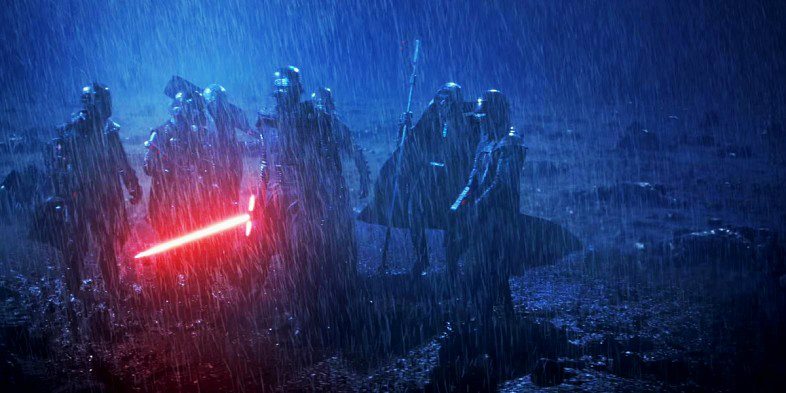
BY: To talk about the craft, you guys weren’t nominated for an Oscar just because it was “Star Wars,” you were nominated for an Oscar because the craft of the sound editing was fantastic. I want to talk a little bit about the craft. One of the sequences I think as some of the richest soundscapes is Rey’s Force vision. I’m wondering if you can offer any insight into that, because there’s a lot of sounds, new and old, from “Star Wars “movies front to back, but there’s also some new dialogue in there. I’m wondering if you guys can tell me the process of editing all that stuff together and how it came about? How it came together?
DA: That was a tough one. That was a sequence that went through a lot of changes, on the picture editing side of things, the story side of things. It had a lot of different, there are many versions of that sequence. Which is not unusual. One of the earliest things we did, that actually Ben Burtt did, was to transfer some old dialogue from the original movies that were alternate, in some cases, alternate takes of dialogue from lines from earlier movies, lines from Luke or lines from Obi-Wan, and they have this sort of a dreamy echo that kind of washes over it. That was part of the original design, this cacophony of voices that were sort of speaking to her from the force beyond. That, ultimately, kind of came back around when we went to final mixing. Gary Rydstrom went through, that piece is largely Gary Rydstrom’s doing.
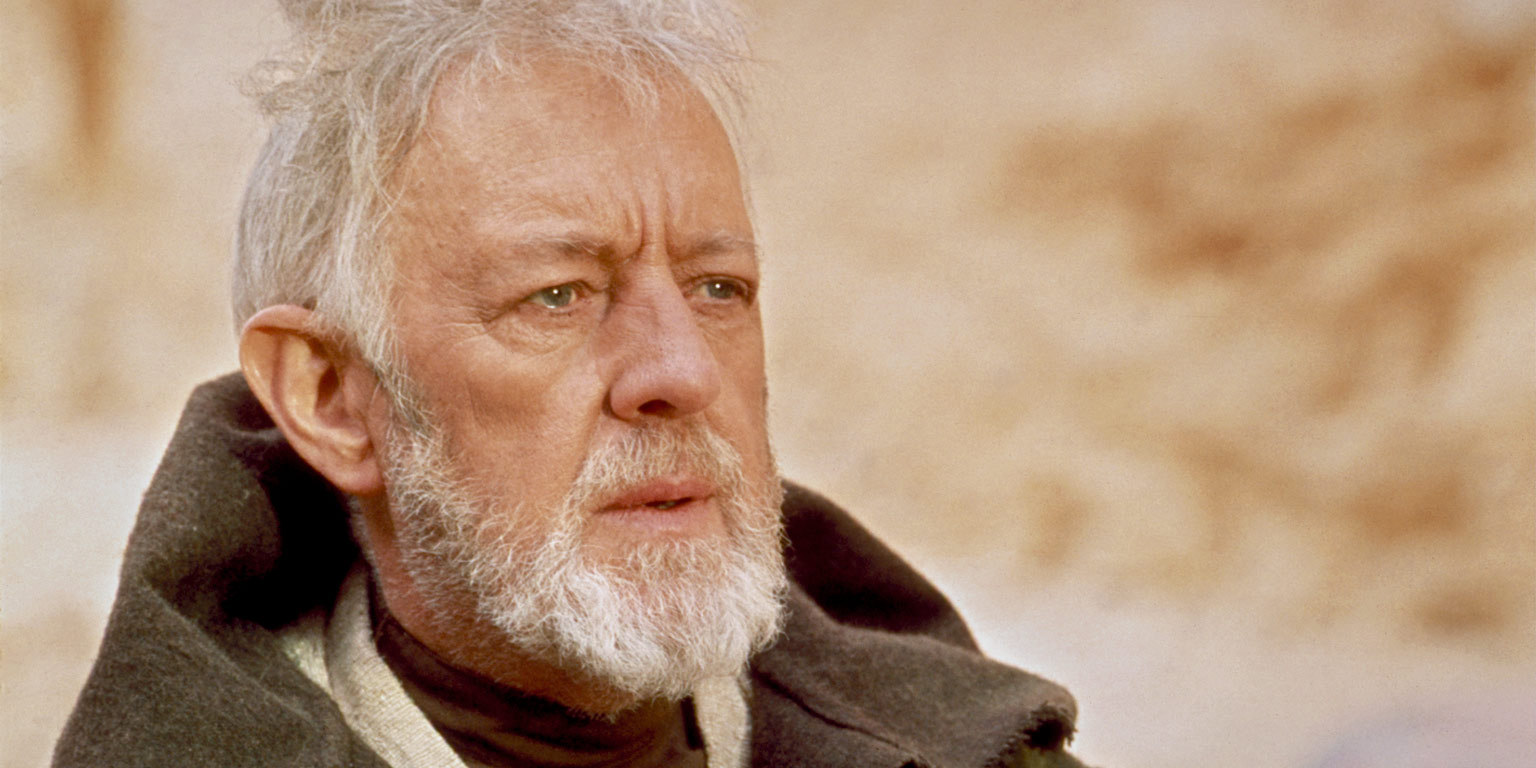
MW: I was going to say, that’s when some of that voice work we did, or had with our players came into play. Because we had, at a certain point, we were going through the playback and maybe we could have Jedi from the past try to contact her and that was kind of an idea there. There was one avenue we went, we took some samples from Alec Guinness from “A New Hope” and kind of switched them around to say, instead of ‘betrayed’ say ‘Rey”. During that loop group session we had, I had James Arnold Taylor with us, I had him record some lines, just as an idea, sort of as a sketch, to see if something would work. Funnily enough, we were able to get Ewan McGregor and I was able to record him in there and put some lines in there as well. So there are three different levels of Obi-Wan that made up that sequence. But, yeah, we call that sequence the Forceback. That’s what we were calling it when we were working on it. It went through a lot of permutations because it was so subjective as to what was going to happen there. We had a lot of time to sort of think of that and work it out. And that’s kind of how JJ operates, too. The procedure of working with him. Once we’re all down there and we’ve got John Williams and Dave and the dialogue department and Gary and Chris Scarabosio and Andy Nelson and the whole mix staff ready to go, that’s when we have all the elements for him to be able to hear and he can really focus on it and we just keep trying stuff out and trying stuff out. A lot of late nights and a lot of exciting directions to go with him to get to the end process. But we all know that we’re working on something that’s going to be highly anticipated, but you just have to treat it like, you do your best and hope people will like it.
BY: One thing I want to ask about is the balance between the music and the audio, the soundscape there. I remember watching, when I was a kid, there was a behind the scenes documentary, it was almost sort of, not a fight, but a creative argument, and those happen, between Ben Burtt and John Williams about which was going to be louder and more featured in a sequence in Return of the Jedi, and I’m wondering how you find the balance with the filmmaker, between this rich tapestry of John Williams music and all this great work you’re doing assembling that lived in sound of “Star Wars?”
DA: That’s the mixer. Our mixers, Scarabosio and Andy Nelson, that’s their task and their art. To create that balance. In a basic sense, that’s what the mixers do, is find that balance between dialogue, effects and music. With every movie, not just with John Williams or with “Star Wars,” you find moments that are music moments where the music is telling the story here, or you find moments where the sound effects are doing the storytelling in this particular moment. And you have a hand off between the two, you try to have a graceful hand off between sound effects and music. And, I guess the Academy saw that their work was acceptable, as we thought it was as well, and they got a nomination as well.
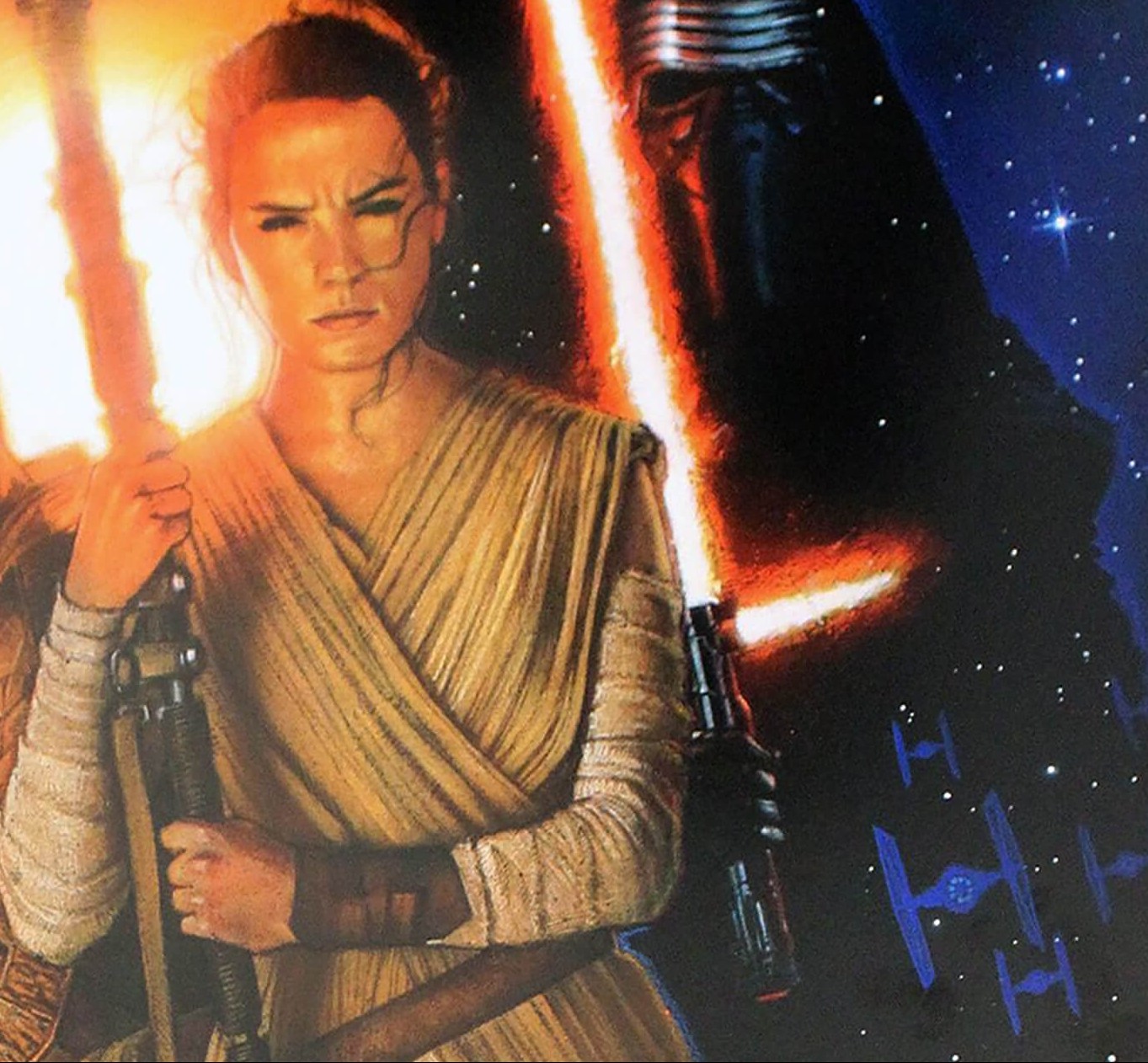
BY: As you guys worked on this movie, you probably went through every sound, every bit of sound and every bit of the film lots, hundreds of times probably. I’m wondering, if there’s a moment for each of you that kind of feels like it just really fell into place perfectly and came out better than you could have hoped? A favorite sound moment or bit of dialogue you put together like we’ve been talking about or anything like that?
MW: I think, and it maybe goes back to your previous question, one of my favorite moments is the, what we called the Force-Off sequence, between Rey and Ren, when Rey is shackled to that chair and Ren is interrogating her with the Force and trying to read her mind. It sort of evolves into this battle of will, this battle of the Force. The thing is, if you are standing in that room, if you are a fly on the wall, you don’t actually hear anything. Because, the Force, the sounds that we have, that we designed for the Force, those sounds aren’t perceptible. It’s more meant as an emotion or feeling. So, in that particular scene, all of the Force sounds, kind of act as both dialogue and music. In that scene. So then you have a chance to let your sound design tell the story, as I was saying in that scene. And hopefully we’ve told it, you get this sort of back and forth between these two highly Force sensitive characters, this battle for dominance. The music comes into that scene as well, so it becomes a bit of a dance at that point between our sound design and the music. And then there’s a resolution at the end. I’m really happy with the way that turned out because it was not an easy scene to pull off. Two characters basically staring at each other.
MW: I think for me, my favorite thing, one of my favorite things in the movie, I think would be the process with which came up with Kylo Ren’s voice and how we put that together. And then seeing it, like, once again it was a great merge of and acting and mixing and sound design and all of us took to come together to make that character. I mean a huge part of that obviously is Adam Driver, he’s the character. But also, just, he was open to go for, we had an idea to give him, the way his mask was going to sound, we really wanted it to be intimidating, that’s it’s sole function, pretty much, is to be intimidating, so we wanted it to have this almost broken kind of quality that was going to be very unsettling, how his voice would come out would almost sound like he was talking very intimately, close to you. But it was coming out of this really raw sounding mask. So we gave the, in the technology part of it, we were able to put that process through the microphone while Adam was performing and have him hear it in his headphones. So we could actually play on the microphone and change his performance based on how the mask sounded real time. So, he really got to use that as an actor tool. So, we wanted intelligibility to be key there, so people could understand what he was saying, but then we also wanted a nice juxtaposition when he takes his helmet off later on when he’s talking to Rey and it’s such a powerful moment there, where his helmet comes off and you didn’t expect him to look that way, didn’t expect him to sound that way and it’s a big shift from when he’s all cloaked and Kylo Ren. That whole process to get to that was great. JJ gave us a lot of words. He wanted it to be like a Harley Davidson with a flamethower with a chainsaw, a lot of big words there. We would always have to scale it back into something that was going to be recognizable, that there’s a voice under there. But, Dave and I got to work together really strongly on that and Andy Nelson mixed it and we had a great editorial team, Cheryl Nardi and Rich Quinn cutting those together. It took the whole team together to make that thing happen and Adam Driver was just awesome about it. He gave us take after take after take and really played on the mic and we’d have a hundred takes of each line, sometimes because he would just really want to get it right. We actually became somewhat friendly from that whole process. Everything there was just was fun for me. The Kylo Ren process.
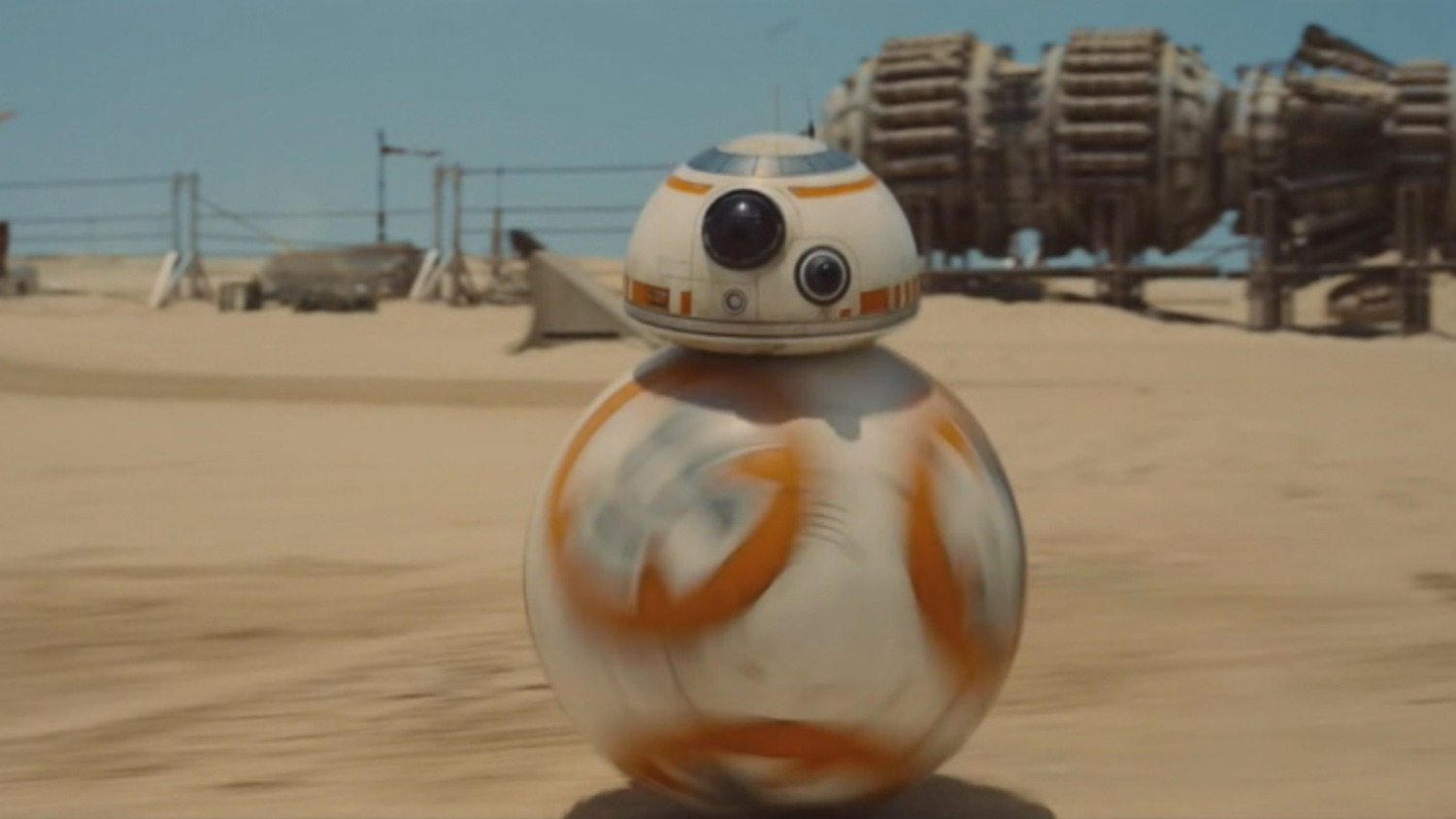
BY: How much involvement did you both have on the BB-8 process?
MW: BB-8 was obviously one of those early things, early design moments, where, like Kylo Ren’s mask, is was going to be something very unique to the movies so it was going to have a high level of interest to make sure it was going to be something really cool. From the beginning it was, we need to differentiate this droid from R2-D2 because there’s going to be a conversation between them later in the film and we want them to sound very distinct. The first time I started doing anything with BB-8 was almost late 2013. Then we went out to Pinewood, to the set, in early 2014 and JJ sort of pitched the whole film and showed the whole thing, the storyboards and the art department and the props people and I got to meet the puppeteers that were going to be operating BB-8. We tried to give them some samples as early on, so JJ himself could trigger BB-8 from the set, using a little tactile interface, actually playing the sound live instead of just having somebody saying beepbeepbeep on the set. That sort of developed into something where he liked the idea that he could use his fingers to trigger tambour and pitch on the interface. We used a little of that then and then he hired in actors. We got Ben Schwartz to come in. He’s a comedian that JJ really likes and he wrote lines for Ben Schwartz to put in the film, placeholders where BB-8 would be responding, the emotional content of each line that he’d be talking to. Because there were long sequences where he would talk to characters a lot longer than R2 would do. So we used that as a guide, sort of editorially, what to do. We built more sound effects there and then JJ kept enjoying the tactile interface there. At a certain point, we took the sound that was coming from the interface and played it through another actor’s mouth, through a talk box , which is what Dave Acord came up with, playing the sounds out of the interface through a tube that goes into the mouth of the actor Bill Hader, who would then move his jaw and mouth movements and openings of his mouth to change the quality of the sound to give it more of a rounded feel. We built a sample library based on that. Then, we enlisted the help of another editor, Lindsey Alvarez, from Bad Robot, to cut that all together and pick the right takes and then that ultimately got mixed into the film by Chris Scarabosio. But it was that long process. Years of refinement to get that to there. JJ had a high level of interest there. And it’s fun for me too, because he actually got to put his hands on it, and he loves to know, he loves to get into the nitty gritty of everything. So for him to be able to put his hands literally on the process to make that work was satisfying to see.
BY: And that’s not the sort of thing you would typically do on a movie as the sound editor or whatever. This is something, it sounds like that’s something sort of special, above and beyond, for this project that would be outside of the norm for another project you would work on.
MW: Absolutely. Absolutely. Yeah, this project. I mean, this is something, even back when George Lucas, we were working for him on this, he started this sort of idea that the sound people need to be included in the process early on. So, having us come out to Pinewood to have JJ pitch the film for us and see it in it’s early days before they even started shooting was a fantastic invitation to have. It was totally inspiring and gets you thinking about the movie really early on and you can build on that. You can go out and do recording expeditions, you can gather everything you want in your sound library, get the team you want and really feel included in the process of the movie. So, these Force films and George, that’s something that he did. We just, the post production process started at the same time as production. I’m really grateful for that because I think it really shows, when you get to the end of the movie, you feel like you’ve definitely done your best and you’ve had a long time to get to where you need to be to make the movie sound the way does.
Tune into the 88th Academy Awards tonight to see if they win!